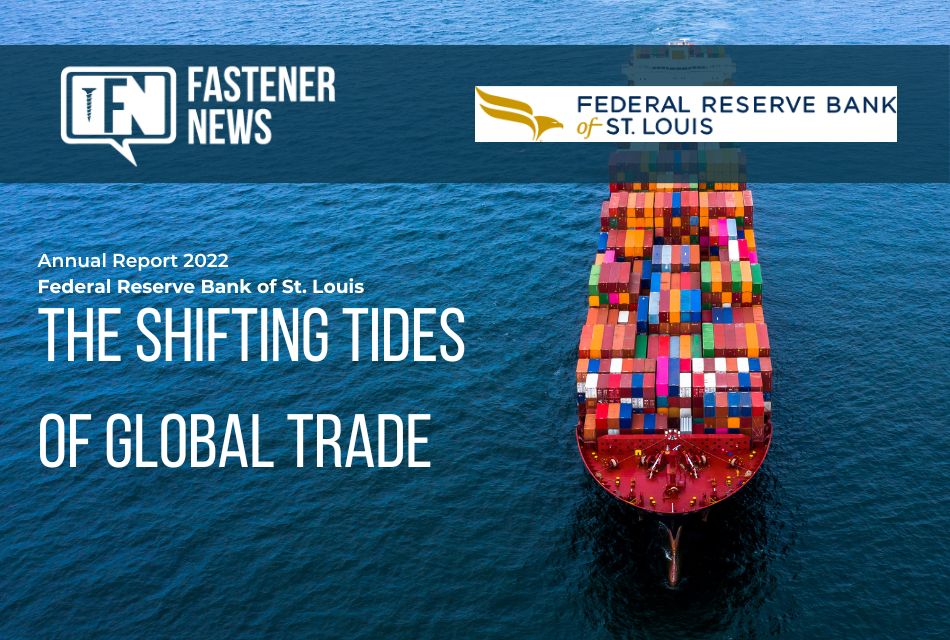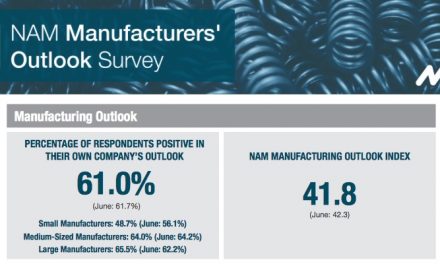Annual Report 2022 | Federal Reserve Bank of St. Louis
The Shifting Tides of Global Trade
Introduction
For several decades, trade among nations increased rapidly, spurred by, among other things, multilateral trade liberalization under the auspices of the General Agreement on Tariffs and Trade (GATT), which went into effect in 1948, and then the World Trade Organization (WTO), which replaced GATT in 1995.
The figure below shows the marked expansion in both U.S. and global trade (exports plus imports) as a percentage of gross domestic product (GDP), which is a standard measure of openness to trade. The world trade-to-GDP ratio climbed from about 25% in 1970 to a peak of about 61% in 2008. Similarly, the U.S. trade-to-GDP ratio rose from about 11% in 1970 to a peak of about 31% in 2011.
President’s Message: Trade and Globalization since the 1980s. Read message

James Bullard is the president and CEO of the Federal Reserve Bank of St. Louis.
U.S. and Global Trade (Exports Plus Imports) in Goods and Services as Share of GDP

SOURCE: The World Bank.
The fact that both peaks occurred more than a decade ago suggests a general pattern of slowing trade, at least in proportion to the sizes of the respective economies. But why?
Specialization along the lines of comparative advantage, the business efficiencies gained from scaling up to meet global demand, and the consumer benefits from having access to specific varieties of goods produced by different nations all point to benefits from a greater integration of world markets. Yet, we see a reduction in trade measured as a percentage of GDP for both the U.S. and the world economy.
In this essay, economists from the Federal Reserve Bank of St. Louis explore different aspects of trade to help explain the headwinds that may be slowing the process of globalization, including:
- How are trade blocs and geopolitical tensions affecting trade?
- How has the U.S.-China trade relationship changed over time?
- What are critical goods, and how are they susceptible to international trade shocks?
- What are the risks to global value chains, and how are governments protecting them?
Challenges to Trade from Trade Blocs, Geopolitical Tensions
Two issues that are central to current U.S. trade relations are trade blocs, such as the U.S.-Mexico-Canada Agreement (USMCA), and the trade effects of geopolitical tensions, such as the ongoing Russia-Ukraine war.
The Impact of Trade Blocs
Trade economists generally agree about the benefits of global free trade, such as lower production costs made possible through international specialization along the lines of comparative advantage. However, the role that trade blocs, such as the one formed by the USMCA, play is less clear. USMCA is a free trade agreement in which those nations conduct free trade within the bloc but unilaterally decide their respective tariffs vis-à-vis nations outside the bloc.
One of the reasons that such blocs exist is the greater feasibility they afford in terms of reaching agreements among a relatively small number of nations. However, there are two major obstacles to such agreements:
- First, while such blocs may create new trade among member nations (a positive), they may divert sourcing of imports from more efficient nonmembers to less efficient member nations (a negative). Even if the net effect appears positive, an agreement may not materialize because of several other factors, including political opposition or disagreements among members on nontrade issues like harmonization of labor working conditions across member nations.
- Second, of prime concern is the income distribution effects of such agreements. Workers in industries whose exports increase with an agreement will likely support it, but workers in industries seeing greater import competition will likely oppose it. Such income distribution concerns, which are almost always associated with trade liberalization within blocs, can lead to political opposition to their enactment.
Indeed, U.S. trade in goods with Canada and Mexico grew rapidly around the time that the North American Free Trade Agreement (NAFTA) went into effect in 1994, creating a free trade zone for Mexico, Canada and the U.S. (See the figure below.)1 However, potential wage and job loss concerns, among other factors, influenced the U.S. decision in January 2017 to back out of the Trans-Pacific Partnership. Similar concerns led to renegotiation of NAFTA, which was replaced in 2020 by USMCA.
U.S. Trade in Goods with NAFTA Partners as Share of GDP

SOURCE: Haver Analytics. NOTE: The gray shaded areas indicate U.S. recessions. Since the figure shows annual data, a given year is shaded if a recession occurred during at least two months of that year, including the short recession in 2020.
READ FULL REPORT:
RELATED CONTENT:
Reports, Reshoring


















